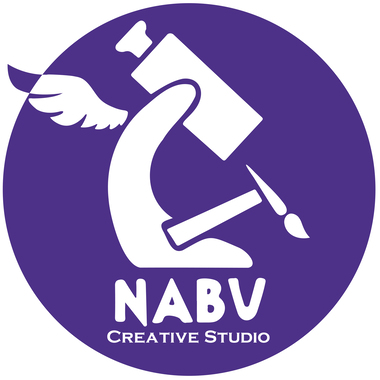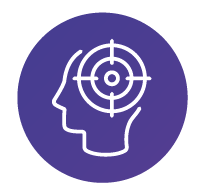Nabu: the creative studio at the interface between Science and Society
We blend together artists, scientists, software engineers and digital designers
into a unique circuit of skills and creativity.
The Krebs cycle of Creativity1
THE LIMITS WE AIM TO OVERCOME
SCIENCE COMMUNICATION:
- LACK OF PROPER SCIENTIFIC KNOWLEDGE IN TRADITIONAL COMMUNICATION AGENCIES
Need for complicated and costly cycles of interaction with the expert commissioning the service2
- TENDENCY TO EXCEED IN DATA PRESENTATION OR SIMPLIFICATION
Misinterpretation by the public, with negative effects on his opinions and decisions3
NABU CREATIVE STUDIO IS BORN FROM THE SYNERGY OF ARTISTS, SCIENTISTS, ENGINEERS AND DESIGNERS:
OUR KEY TO OVERCOME THESE LIMITS
OUR GOALS
effective science communication through visual storytelling
-
Anthropological and neuroscientific foundations:
- Since prehistoric times human beings transfer information through pictorial representations and storytelling
- Images are on average more easily processed by the brain compared to text.
> they reduce the load on working memory, thus leaving space to further stock information6 - The dual code theory: information transferred through both images and text stimulate two different neural channels in parallel, thus being favored to be processed7
-
Benefits:
science & user – centered
application softwares
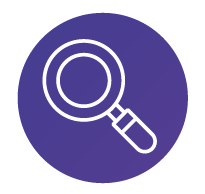
1. STRATEGY:
Identification of an unmet need in the community that can be digitally addressed
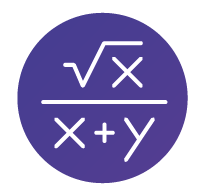
2. SCIENCE:
Development of algorithms and functionalities scientifically addressing the unmet need

3. USER EXPERIENCE:
Design of clear and engaging graphic interfaces and functionalities
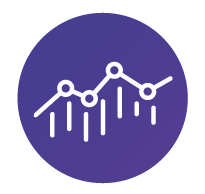
4. MONITORING & OPTIMIZATION:
Periodical feedback from the users and evaluation of the impact on the target need
> Optimization of steps 2 and 3
AREAS OF INTEREST

BIOLOGY & MEDICINE

ECOLOGY

PHYSICS & ENGINEERING

INFORMATION TECHNOLOGY
TARGET ACTIVITIES
Scientific research
- Accurate, clear and persuasive communication strategies suitable to show scientific data to experts inf the field, funding agencies, regulatory agencies and media.2
- Virtual reconstruction of complex biological phenomena to facilitate their understanding and predict the efficacy of technological interventions.11
Science communication
- Communication strategies accurately tailored to the target non-specialist audience.12
Education
- Visual representations suitable to facilitate learning of scientific topics.9
- Digital games stimulating critical and creative thinking.13
Healthcare and Environmental protection
- Accurate and engaging information campaigns tailored to the target audience.14
- Software applications for both scientific experts and the broad public.15,16
Marketing
- Communication strategies suitable to promote products and technologies valuable for society.17
HOW WE WORK
CASE HISTORY
Contact us now for any specific request or general curiosities
REFERENCES:
1.Age of Entanglement. Journal of Design and Science.
2.Science–graphic art partnerships to increase research impact. Commun Biol.
3.Visualisations in science communication: Friend or foe? MedicalWriting 2020.
4.Artificial Intelligence in Medicine: Applications, implications, and limitations. Harvard University.
5.mHealth Consumer Apps: The Case for User-Centered Design. Biomed Instrum Technol.
6.Graphic Organizers: A Review of Scientifically Based Research. The Institute for the Advancement of Research in Education (IARE) at AEL.
7.Repetition and dual coding in procedural multimedia presentations. Applied Cognitive Psychology.
8.Presentation format and its effect on working memory. Memory & Cognition.
9.A picture is worth a thousand words: visual thinking between creative thinking and critical thinking in the teaching-learning processes. img journal.
10.Picture This: The Influence of Emotionally Valenced Images, On Attention, Selection, and Sharing of Social Media News. Media Psychology
11.Science goes virtual. Nature
12.Making Science Meaningful for Broad Audiences through Stories. Integr Comp Biol.
13.Context-Adaptive Values-Based Games for the Young: Responsible Decision Making for a Sustainable World. ICTCC 2017, ICCASA 2017.
14.From research to evidence-informed decision making: a systematic approach. Journal of Public Health.
15.Beyond validation: getting health apps into clinical practice. npj Digit. Med.
16.Mobile Applications to Link Sustainable Consumption with Impacts on the Environment and Biodiversity. BioScience.
17.The Power of Visual Communication. PwC
